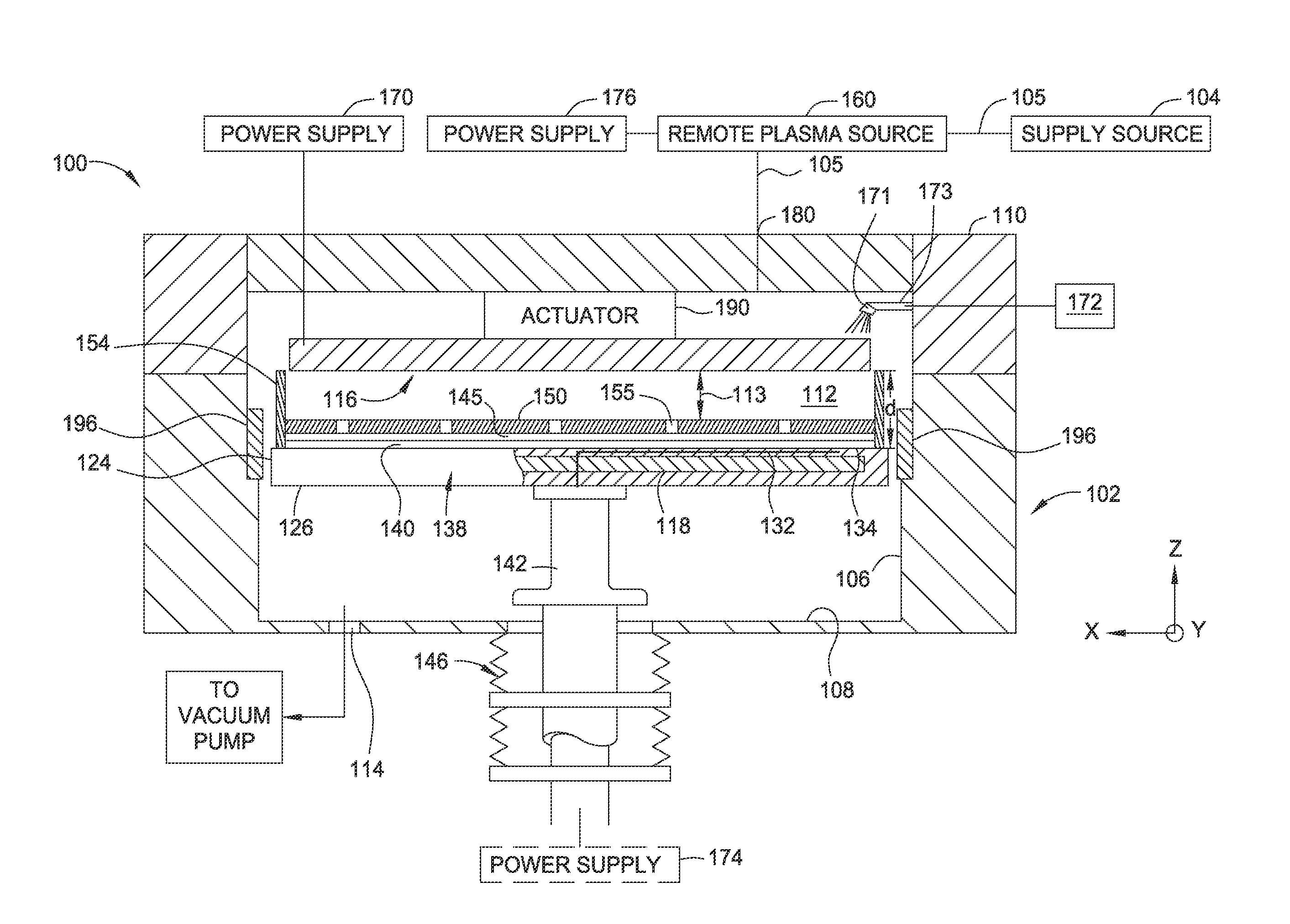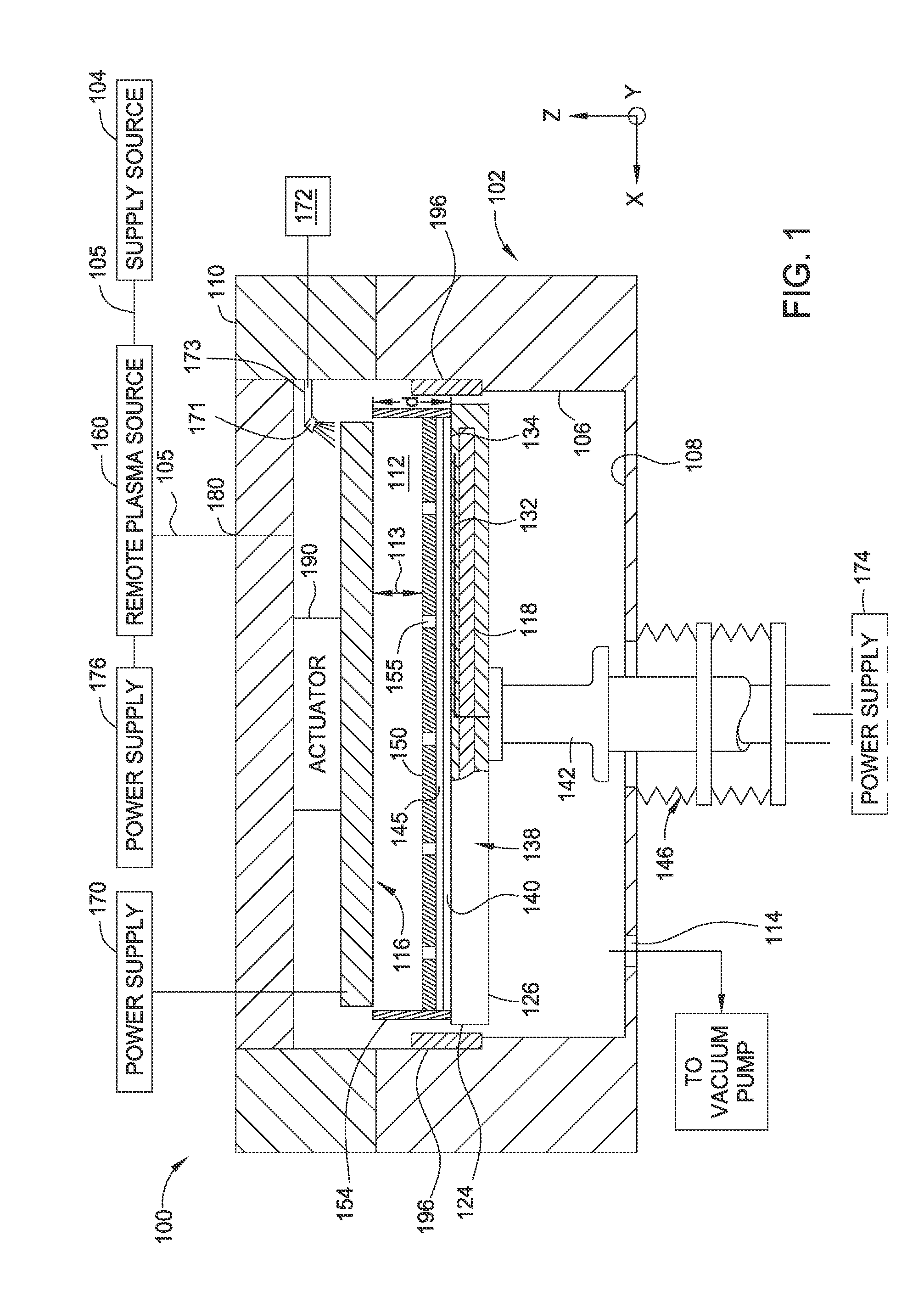Immersion field guided exposure and post-exposure bake process
a technology of immersion field and exposure bake, which is applied in the direction of photomechanical equipment, photosensitive material processing, instruments, etc., can solve the problems of latent acid image in resist resin, small wavelength lithography suffers, and integrated circuits have evolved into complex devices
- Summary
- Abstract
- Description
- Claims
- Application Information
AI Technical Summary
Benefits of technology
Problems solved by technology
Method used
Image
Examples
Embodiment Construction
[0020]Methods and apparatuses for minimizing line edge / width roughness and improving exposure resolution in a photolithography process for semiconductor applications are provided. The methods and apparatuses disclosed herein may increase the photoresist sensitivity and productivity of photolithography processes. The random diffusion of charged species generated by a photoacid generator during a post-exposure bake procedure contributes to line edge / width roughness and reduced resist sensitivity. An electrode assembly may be utilized to apply an electric field and / or a magnetic field to the photoresist layer during photolithography processes. The field application may control the diffusion of the charged species generated by the photoacid generator. Furthermore, an intermediate medium is utilized between the photoresist layer and the electrode assembly so as to enhance the electric field generated therebetween. An air gap defined between the photoresist layer and the electrode assembl...
PUM
| Property | Measurement | Unit |
|---|---|---|
| dielectric constant | aaaaa | aaaaa |
| distance | aaaaa | aaaaa |
| length | aaaaa | aaaaa |
Abstract
Description
Claims
Application Information
 Login to View More
Login to View More - R&D
- Intellectual Property
- Life Sciences
- Materials
- Tech Scout
- Unparalleled Data Quality
- Higher Quality Content
- 60% Fewer Hallucinations
Browse by: Latest US Patents, China's latest patents, Technical Efficacy Thesaurus, Application Domain, Technology Topic, Popular Technical Reports.
© 2025 PatSnap. All rights reserved.Legal|Privacy policy|Modern Slavery Act Transparency Statement|Sitemap|About US| Contact US: help@patsnap.com



